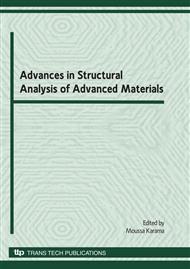p.93
p.103
p.113
p.129
p.141
p.149
p.159
p.171
p.179
Links Between Machining Parameters and Surface Integrity in Drilling Ni-Superalloy
Abstract:
In aerospace industry, the manufacturing of critical parts (high energy components) requires an important validation process to guarantee the quality of the produced parts, and thus their fatigue lifecycle. Globally, this validation consists in freezing the cutting conditions using metallurgical analysis or fatigue trials, and a test on the first article. This process is extremely complex and expensive. In this way establishing the correlation between the cutting conditions and the surface integrity will help us to optimize the manufacture of those parts. In this article, by the means of an experimental method, we define a domain of validation by combining the cutting conditions according to the classic criteria established by AFNOR E66-520 norm (Couple-Tool-Material) and the criteria of surface integrity for the drilling of a Nickel-base superalloy. The experimental device consists in drilling a Ø15.5 mm hole on a 3-axis milling centre instrumented by a 4 components Kistler dynamometer (Fx, Fy, Fz and Mz), a spindle power sensor “Watt-pilote” and three accelerometers placed following the directions X, Y and Z. Scanning Electron Microscopy (SEM) observations, micro-hardness tests and topographic measurements with an optical profilometer, are carried out to characterize the metallurgical state of the holes manufactured. Finally, correlations were respectively made between the cutting conditions, the recorded signals and the metallurgical state of the holes.
Info:
Periodical:
Pages:
171-178
Citation:
Online since:
May 2010
Authors:
Keywords:
Price:
Сopyright:
© 2010 Trans Tech Publications Ltd. All Rights Reserved
Share:
Citation:


